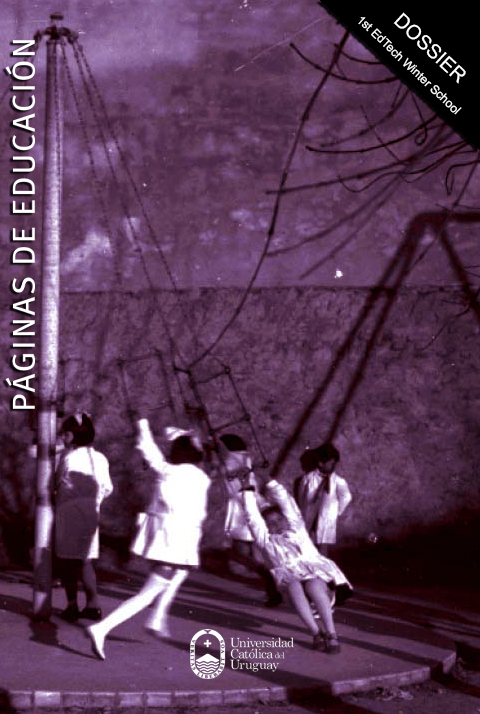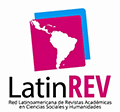What’s new about ‘fake news’? Critical digital literacies in an era of fake news, post-truth and clickbait
DOI:
https://doi.org/10.22235/pe.v11i1.1551Keywords:
critical digital literacies, fake news, digital platforms, social mediaAbstract
The 2016 Facebook fake news scandal has highlighted the difficulty in determining the credibility and reliability of news. As a result, there have been calls for individuals to adopt a more informed and critical stance toward the sources of their news. This paper considers what might be involved in cultivating critical digital literacies in an era of post-truth, fake news and clickbait. Using the platform as the framework for study, the paper examines how the architecture, algorithms and network effects of the platform have changed the way news is created and disseminated, and how audiences are positioned to engage with it. This theoretical critique provides insight into the technical, political and social issues surrounding how individuals engage with online news.
Downloads
References
Andrejevic, M. (2013). Infoglut: How Too Much Information is Changing the Way We Think and Know. New York, NY: Routledge.
Apperley, T., & Parikka, J. (2015). Platform studies' epistemic threshold. Games and Culture, 1(21), 1-14.
Baldwin, C. Y., & Woodard, C. J. (2008). The architecture of platforms: A unified view. Harvard Business School Working Paper. Retrieved from http://www.hbs.edu/faculty/Publication%20Files/09-034_149607b7-2b95-4316-b4b6-1df66dd34e83.pdf
Balmas, M. (2014). When fake news becomes real: Combined exposure to multiple news sources and political attitudes of inefficacy, alienation and cynicism. Communication, 41(3), 430-454.
Beer, D. (2016). Metric Power. London, England: Palgrave Macmillan.
Belleflamme, P., & Peitz, M. (2016). Platforms and network effects. In L. Corchon, M. Marini, & E. Elgar (Eds.), Handbook of Game Theory and Industrial Organization. Vol. II (pp. 286-317). Northhampton, MA: Edward Elgar.
Bratton, B. (2015). The Stack: On Software and Sovereignty. Cambridge, MA: The MIT Press.
Braucher, D. (2016). Fake news: Why we fall for it. Psychology Today. Retrieved from https://www.psychologytoday.com/blog/contemporary-psychoanalysis-in-action/201612/fake-news-why-we-fall-it
Bucher, T. (2012). Want to be on the top? Algorithmic power and the threat of invisibility of Facebook. New Media & Society, 14(7), 1164-1180.
Byrne, A. (2016). Macedonia's fake news industry sets sights on Europe. Financial Times. Retrieved from http://www.nybooks.com/daily/2017/02/13/the-true-history-of-fake-news/
Clark, L. S., & Marchi, R. (2017). Young People and the Future of News. Cambridge, UK: Cambridge University Press.
Dale, R. (2017). Industry watch: NLP in a post-truth world. Natural Language Engineering, 23(2), 319-324.
Darnton, R. (2017). The true history of fake news. The New York Review of Books. Retrieved from http://www.nybooks.com/daily/2017/02/13/the-true-history-of-fake-news/
Del Vicario, M., Vivaldo, G., Bessi, A., Zollo, F., Scala, A., Caldarello, G., & Quattrociocchi, W. (2016). Echo chambers, emotional contagion and group polarization on Facebook. Nature Scientific Reports, 6, 1-14. Retrieved from https://arxiv.org/abs/1607.01032
Egebark, J., & Ekstrom, M. (2011). Like what you like or like what others like? Conformity and peer effects on Facebook. Research Institute of Industrial Economics Report. Stockholm, Sweden. Retrieved from https://pdfs.semanticscholar.org/a367/bf790988b61335c556967babc3ea4ebd072e.pdf
Eranti, V., & Lonkila, M. (2015). The social significance of the Facebook Like button. First Monday, 20(6). Retrieved from http://firstmonday.org/ojs/index.php/fm/article/view/5505
Galloway, A. (2011). Are some things unrepresentable? Theory, Culture and Society, 28(7-8), 85-102.
Gerlitz, C., & Helmond, A. (2013). The like economy: Social buttons and the data-intensive web. New Media & Society, 15(8), 1348-1365.
Google. (2009). Personalised search for everyone. Google Blog Spot. Retrieved from https://googleblog.blogspot.com.au/2009/12/personalized-search-for-everyone.html
Gottfried, J., & Shearer, E. (2016). News use across social media platforms 2016. Pew Research Centre - Journalism & Media. Retrieved from http://www.journalism.org/2016/05/26/news-use-across-social-media-platforms-2016/
Greenhow, C., & Reifman, J. (2009). Engaging youth in social media: Is Facebook the new media frontier? Nieman Reports. Retrieved from http://niemanreports.org/articles/engaging-youth-in-social-media-is-facebook-the-new-media-frontier/
Grossman, L. (2006) Times person of the year: You. Time Magazine. Retrieved from http://content.time.com/time/magazine/article/0,9171,1570810,00.html
Harris, T. (2016). How technology is hijacking your mind - from a magician and Google design ethicist. Thrive Global. Retrieved from https://journal.thriveglobal.com/how-technology-hijacks-peoples-minds-from-a-magician-and-google-s-design-ethicist-56d62ef5edf3
Helmond, A. (2015). The platformatization of the web: Making web data platform ready. Social Media + Society, July-December, 1-11.
Hillis, K., Paasonen, S., & Petit, M. (2015). Networked Affect. Cambridge, MA: The MIT Press.
Ingram, M. (2016). Facebook traffic to US News sites has fallen by double digits, report says. Fortune. Retrieved from http://fortune.com/2016/08/16/facebook-traffic-media/
Jenkins, H. (2006). Confronting the challenges of participatory culture: Media education for the 21st century. Cambridge, MA: The MIT Press.
Katz, M., & Shapiro, C. (1986). Technology adoption in the presence of network externalities. Journal of Political Economy, 94, 822-841.
Khaldarova, I., & Pantii, M. (2016). Fake news: The narrative battle over the Ukrainian conflict. Journalism Practice, 10(7), 891-901.
Kofoed, J., & Ringrose, J. (2012). Travelling and sticky affects: Exploring teens and sexualised cyberbullying through a Butlerian-Deleuzian-Guattarian lens. Discourse: Studies in the Cultural Politics of Education, 33(1), 5-20.
Leong, L. (2017). Fighting fake news: How Google, Facebook and others are trying to stop it. Techradar. Retrieved from http://www.techradar.com/news/fighting-fake-news-how-google-facebook-and-more-are-working-to-stop-it
Luke, A. (2013). Regrounding critical literacy: Representation, facts and reality. In M. R. Hawkins (Ed.), Framing Languages and Literacies: Socially Situated Views and Perspectives (pp. 136-148). New York, NY: Routledge.
McGee, M. (2012). Facebook: 3.2 billion likes & comments everyday Marketing Land. Retrieved from https://marketingland.com/facebook-3-2-billion-likes-comments-every-day-19978
Marchi, R. (2012). With Facebook, blogs and fake news, teens reject journalistic "objectivity". Journal of Communication Inquiry, 36(3), 246-262.
Matsa, K. E., & Mitchell, A. (2014). 8 Takeaways about social media and news. Pew Research Centre - Journalism & Media. Retrieved from http://www.journalism.org/2014/03/26/8-key-takeaways-about-social-media-and-news/
Mihailidis, P., & Viotty, S. (2017). Spreadable spectacle in digital culture: Civic expression, fake news, and the role of media literacies in "post-fact" society. American Behavioural Scientist. Retrieved from http://journals.sagepub.com/doi/abs/10.1177/0002764217701217
Mirowski, P. (2014). Never Let a Serious Crisis Go To Waste: How Neoliberalism Survived the Financial Meltdown. London, England: Verso.
Mitchem, M. (2008). Video social: Complex parasitical media. In G. Lovink, & S. Niederer (Eds.), Video Vortex Reader: Responses to YouTube (pp. 273-282). Amsterdam, The Netherlands: Institute of Network Cultures.
Network Science in Education. (2017). Network Literacy: Essential Concepts and Core Ideas. Retrieved from https://sites.google.com/a/binghamton.edu/netscied/teaching-learning/network-concepts
Mobasher, B., Cooley, R., & Srivastava, J. (2000). Automatic personalization based on web usage mining. Communications of the ACM, 43(8). Retrieved from http://dl.acm.org/citation.cfm?id=345169
Nicolaou, A., & Giles, C. (2017). Public trust in media at all time low, research shows. Financial Times. Retrieved from https://www.ft.com/content/fa332f58-d9bf-11e6-944b-e7eb37a6aa8e
Nikolov, D., Oliveira, D. F. M., Flammini, A., & Menczer, F. (2015). Measuring online social bubbles. PeerJ Computer Science, 1(38), 1-14.
Oeldorf-Hirsch, A., & Sundar, S. (2015). Posting, commenting, and tagging: Effects of sharing news stories on Facebook. Computers in Human Behaviour, 44, 240-249.
Park, S. (2016). Key findings: Digital news consumption in Australia. In J. Watkins (Ed.), Digital News Report: Australia 2016. Canberra, Australia: University of Canberra. Retrieved from: http://www.presscouncil.org.au/uploads/52321/ufiles/Fact_Sheets/digital-news-report-australia-2016.pdf
Pogue, D. (2017). What Facebook is doing to combat fake news. Scientific American. Retrieved from https://www.scientificamerican.com/article/pogue-what-facebook-is-doing-to-combat-fake-news/
Rieder, B. (2012). What is in PageRank? A historical and conceptual investigation of a recursive status index. Computational Culture: A Journal of Software Studies. Retrieved from http://computationalculture.net/2012/08/29/what_is_in_pagerank/
Roberts, J. (2016). Why Facebook won't admit it’s a media company. Fortune. Retrieved from http://fortune.com/2016/11/14/facebook-zuckerberg-media/
Rohn, U. (2013). Social network sites across cultures and countries: Proximity and network effects. Qualitative Research Reports in Communication, 14(1), 28-34.
Silverman, C. (2016). This analysis shows how viral fake election news stories outperformed real news on Facebook. Buzzfeed News. Retrieved from https://www.buzzfeed.com/craigsilverman/viral-fake-election-news-outperformed-real-news-on-facebook?utm_term=.todxjq3rN#.qdmV4Ao3X
Spinney, L. (2017). The shared past that wasn't. Nature, 543, 168-171.
Srnicek, N. (2017). Platform Capitalism. Malden, MA: Polity Press.
Subramanian, S. (2017). Inside the Macedonian fake-news complex. Wired. Retrieved from https://www.wired.com/2017/02/veles-macedonia-fake-news/
Sumner, E. M., Ruge-Jones, L., & Alcorn, D. (2017). A functional approach to the Facebook Like button: An exploration of meaning, interpesonal functionality, and potential response buttons. New Media & Society, Advanced online edition, 1-19.
Wardle, C. (2017). Fake news. It's complicated. First Draft. Retrieved from https://medium.com/1st-draft/fake-news-its-complicated-d0f773766c79#.y8p67xwvw















